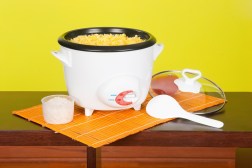Choosing the Perfect Can Opener: Manual or Electronic?
When it comes to opening cans, we often find ourselves faced with a choice between two types of can openers: manual and electronic. Both options have their own advantages and drawbacks, making it essential to consider various factors before making a decision. In this article, we will compare manual and electronic can openers in terms of their functionality, convenience, durability, and cost-effectiveness.
Functionality
The functionality of a can opener is undoubtedly the most crucial aspect to consider. Manual can openers have been around for decades and are simple yet effective tools. They usually consist of a sharp blade attached to a rotating handle that cuts through the lid of the can. On the other hand, electronic can openers utilize motors to do the work for you. With just a push of a button, they effortlessly glide along the edge of the can.

While both types get the job done, manual can openers require some physical effort on your part. Some people find this process nostalgic and enjoy the hands-on experience it provides. However, if you have limited hand strength or dexterity issues, an electronic opener might be more suitable for you.
Convenience
When it comes to convenience, electronic can openers take the lead. With their automated operation, all you need to do is place the opener on top of the can and press a button. This makes them an excellent choice for those who prefer minimal effort or have physical limitations that make using manual openers challenging.
Additionally, most electric models come with additional features such as bottle-opening capabilities or built-in knife sharpeners. These added functionalities provide extra convenience in your kitchen tasks.
On the other hand, manual can openers are compact and portable since they don’t rely on electricity. They are ideal for camping trips or situations where power sources may not be readily available.
Durability
Durability is an essential factor when choosing any kitchen tool, including can openers. Manual can openers are known for their sturdiness and longevity. They are often made of stainless steel or heavy-duty plastic, ensuring they can withstand regular use without wearing out quickly.
Electronic can openers, while convenient, may not always be as durable as their manual counterparts. They typically have more moving parts that can be prone to malfunction or breakage over time. However, investing in a reputable brand and model can increase the chances of long-lasting performance.
Cost-effectiveness
Cost is often a significant consideration when purchasing any kitchen appliance. Manual can openers tend to be more budget-friendly than electronic ones. Their simple design and lack of electrical components make them an affordable option for most households. You can find reliable manual can openers for as little as a few dollars.
Electronic can openers, on the other hand, come in a wide range of prices depending on the features they offer. Basic models are generally affordable but may lack additional functionalities. If you’re looking for advanced features like automatic shut-off or one-touch operation, expect to pay a higher price.
In conclusion, choosing between a manual and electronic can opener ultimately depends on your personal preferences and needs. If you value simplicity and durability at an affordable price point, a manual opener might be the best choice for you. However, if convenience and ease-of-use are paramount considerations or you have physical limitations, an electronic opener will be the ideal fit for your kitchen arsenal.
This text was generated using a large language model, and select text has been reviewed and moderated for purposes such as readability.





